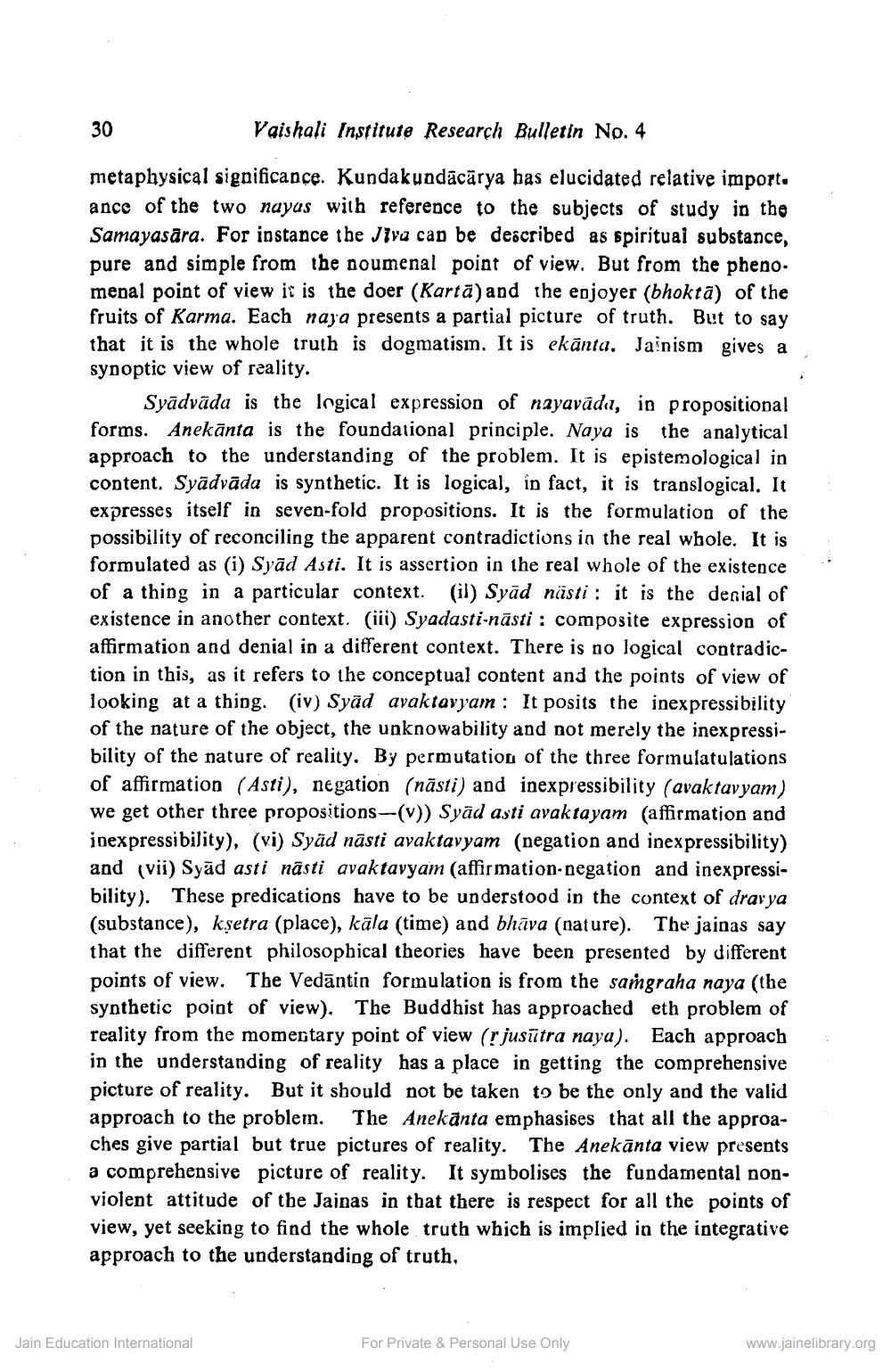________________
30
Vaishali Institute Research Bulletin No. 4
metaphysical significance. Kundakundācārya has elucidated relative import. ance of the two nayas with reference to the subjects of study in the Samayasara. For instance the Jiva cap be described as spiritual substance, pure and simple from the noumenal point of view. But from the pheno. menal point of view it is the doer (Kartā) and the enjoyer (bhokta) of the fruits of Karma. Each naya presents a partial picture of truth. But to say that it is the whole truth is dogmatism. It is ekānta. Jainism gives a synoptic view of reality.
Syādvāda is the logical expression of nayavāda, in propositional forms. Anekānta is the foundational principle. Naya is the analytical approach to the understanding of the problem. It is epistemological in content. Syādvāda is synthetic. It is logical, in fact, it is translogical. It expresses itself in seven-fold propositions. It is the formulation of the possibility of reconciling the apparent contradictions in the real whole. It is formulated as (i) Syād Asti. It is assertion in the real whole of the existence of a thing in a particular context. (il) Syād nästi: it is the denial of existence in another context. (iii) Syadasti-năsti: composite expression of affirmation and denial in a different context. There is no logical contradiction in this, as it refers to the conceptual content and the points of view of looking at a thing. (iv) Syād avaktavyam: It posits the inexpressibility of the nature of the object, the unknowability and not merely the inexpressibility of the nature of reality. By permutation of the three formulatulations of affirmation (Asti), negation (nāsti) and inexpressibility (avaktavyam) we get other three propositions-(v)) Syād asti avaktayam (affirmation and inexpressibility), (vi) Syäd nāsti avaktavyam (negation and inexpressibility) and (vii) Syād asti nâsti avaktavyam (affirmation-negation and inexpressibility). These predications have to be understood in the context of drar ya (substance), kşetra (place), kāla (time) and bhāva (nature). The jainas say that the different philosophical theories have been presented by different points of view. The Vedāntin formulation is from the samgraha naya (the synthetic point of view). The Buddhist has approached eth problem of reality from the momentary point of view (r jusūtra naya). Each approach in the understanding of reality has a place in getting the comprehensive picture of reality. But it should not be taken to be the only and the valid approach to the problem. The Anekānta emphasises that all the approaches give partial but true pictures of reality. The Anekānta view presents a comprehensive picture of reality. It symbolises the fundamental nonviolent attitude of the Jainas in that there is respect for all the points of view, yet seeking to find the whole truth which is implied in the integrative approach to the understanding of truth,
Jain Education International
For Private & Personal Use Only
www.jainelibrary.org




